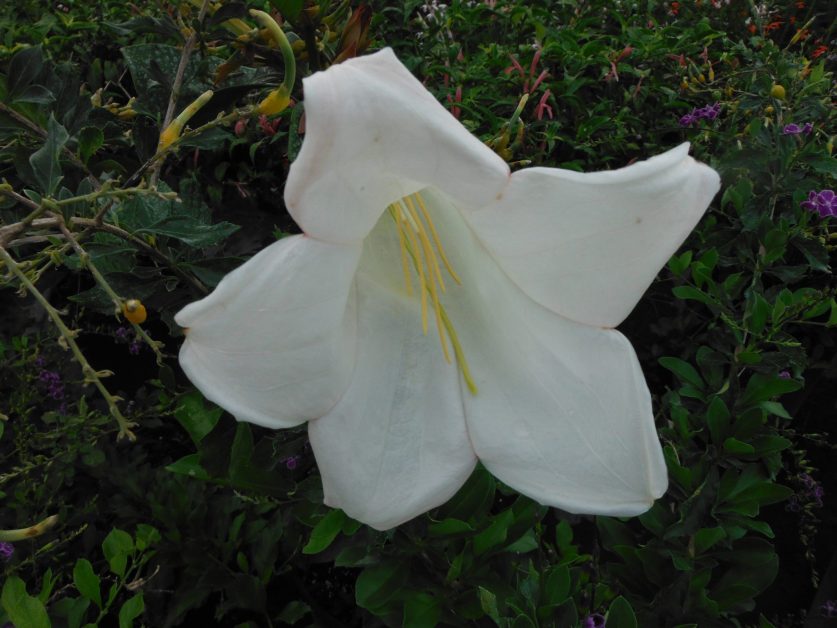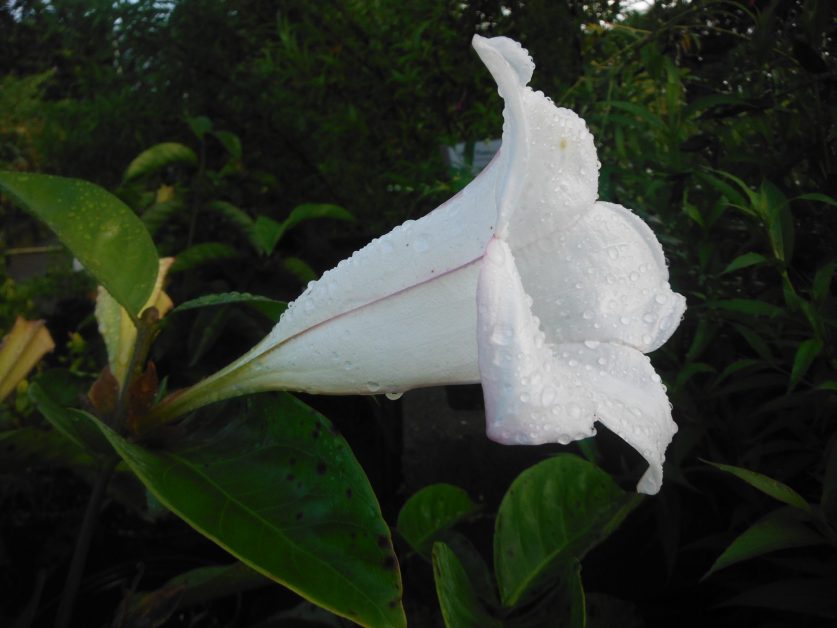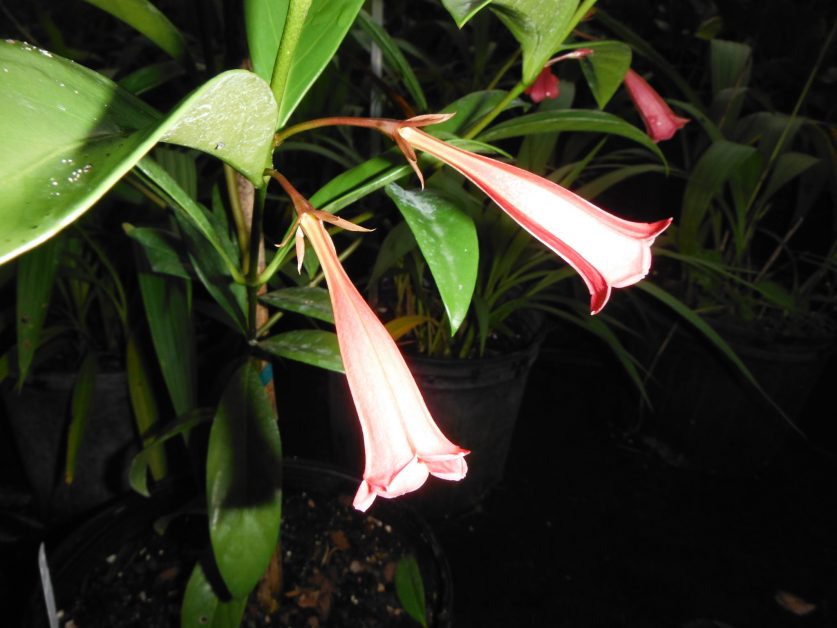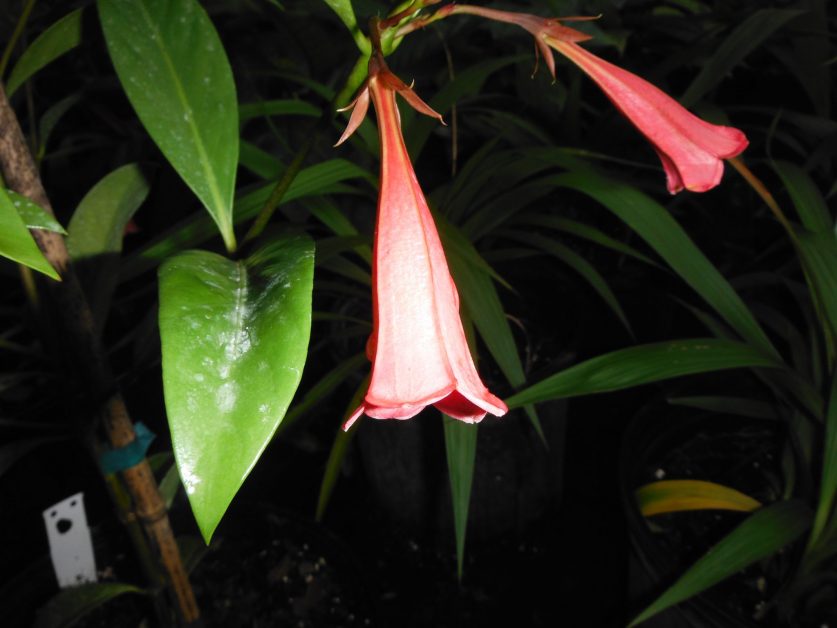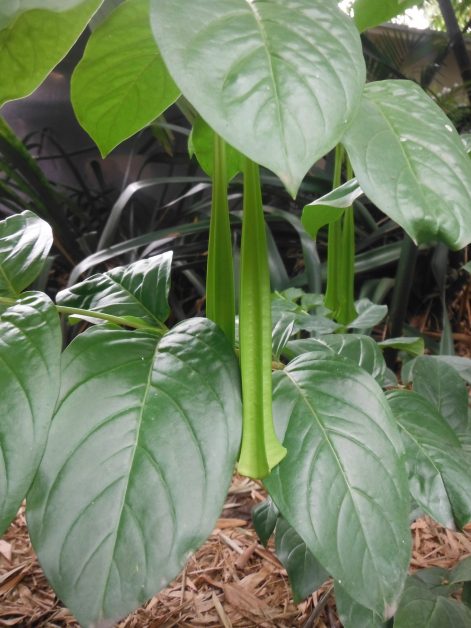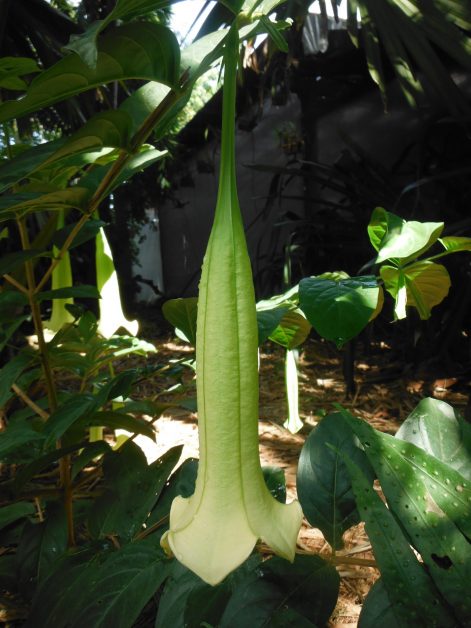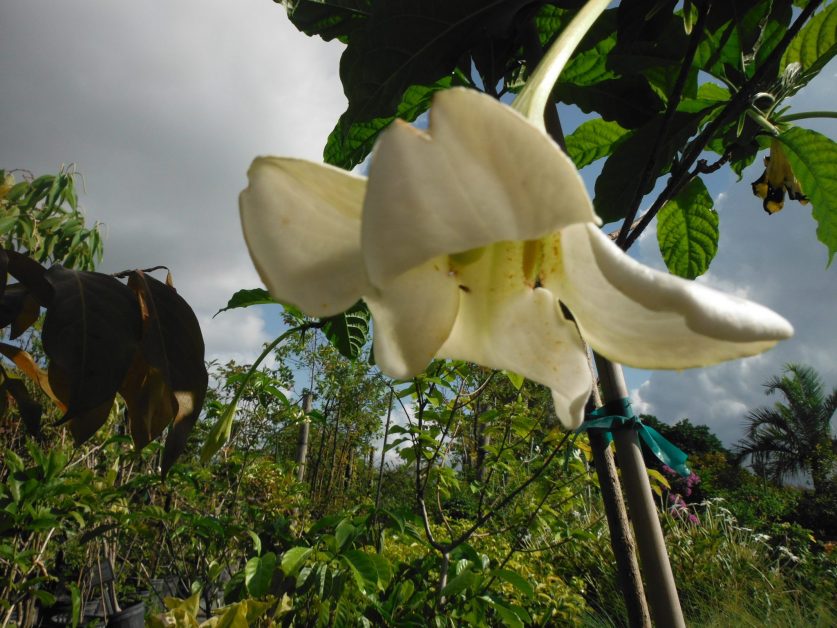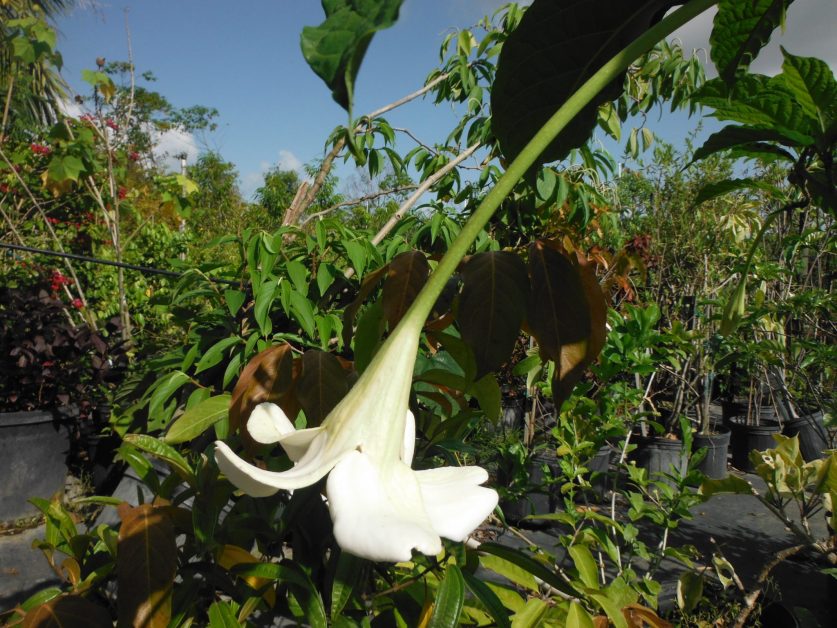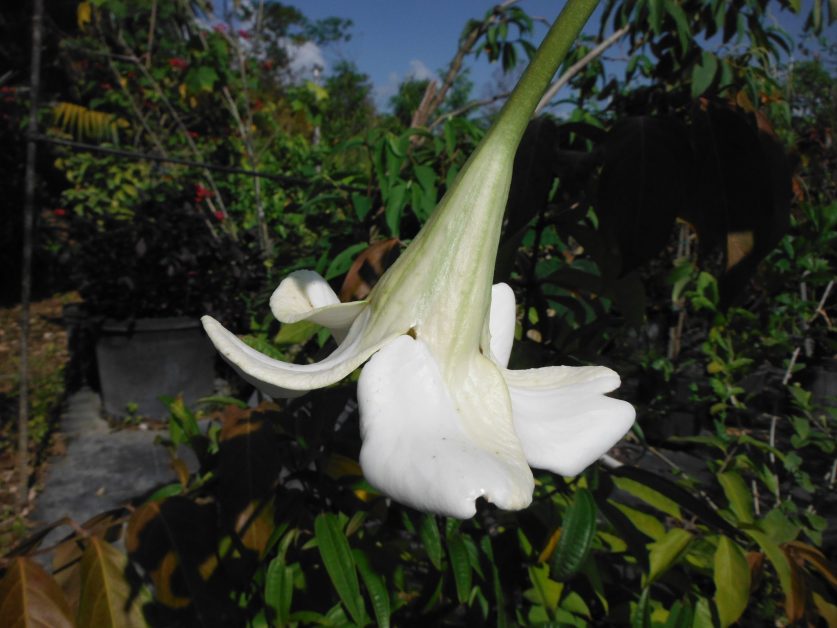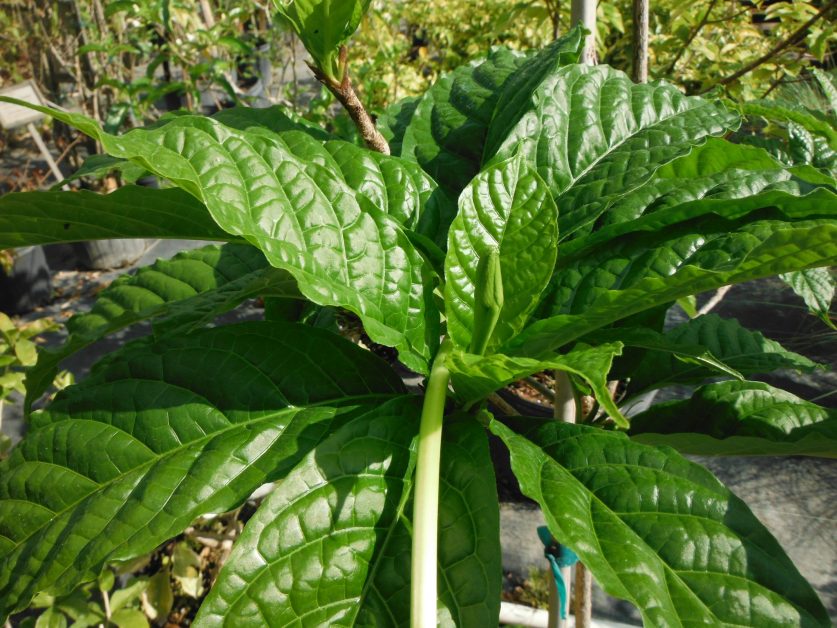Portlandia and Other Rubiaceae Relatives
Portlandia grandiflora (Tree Lily or Bell Flower) has fragrant flowers like its relative, the Gardenia. It is a small tree or shrub from the Caribbean attaining a height of 6-8 feet. It grows best in filtered light and does very well in South Florida’s alkaline soils. It blooms from spring to fall with 6 inch long bell shaped white to pinkish white flowers contrasted against dark green lush fleshy leaves.
Portlandia proctorii (Pink Bell Flower) is endemic to Jamaica and has a similar growth habit to P. grandiflora. However, its leaves and flowers are much smaller and the flower color is pink to red.
Cubanola domingensis (Dominican Bell Flower) is endemic to the Dominican Republic and was once classified in the genus Portlandia. It is a 5 foot shrub and its flowers are long, narrow, and hang straight down in pairs. They are also fragrant like Portlandia, but off-white to almost green in color. This plant thrives in partial shade to full shade.
Catesbaea spinosa (Lily Thorn) grows in full to partial sun and can attain a height of 8 feet. It has a corky bark, very slender, tiny leaves, and with thorny branches. It has 6 inch yellow-white flowers which dangle from the plant. It produces an edible fruit which is slightly tart, but with good flavor. Another member of this genus is C. parviflora which is native to the Florida Keys and is endangered.
Euclinia longiflora (African Tree Gardenia) has long tubular white fragrant flowers which hang down from the plant in contrast to the dark green foliage which resembles coffee leaves. This is a small tree, 12-20 feet, which can be grown in full sun. It is from tropical Africa and Madagascar.
Richard Lyons’ Nursery has Portlandia species in 3gal. containers. We are currently in the process of propagating some of the relatives listed above.
- Portlandia grandiflora (Tree Lily)
- Portlandia grandiflora (Tree Lily)
- Portlandia grandiflora (Tree Lily)
- Portlandia proctorii (Pink Bell Flower)
- Portlandia proctorii (Pink Bell Flower)
- Cubanola domingensis (Dominican Bell Flower)
- Cubanola domingensis (Dominican Bell Flower)
- Cubanola domingensis (Dominican Bell Flower)
- Cubanola domingensis (Dominican Bell Flower)
- Cubanola domingensis (Dominican Bell Flower)
- Euclinia longiflora (Tree Gardenia)
- Euclinia longiflora (Tree Gardenia)
- Euclinia longiflora (Tree Gardenia)
- Euclinia longiflora (Tree Gardenia)
- Euclinia longiflora (Tree Gardenia)
